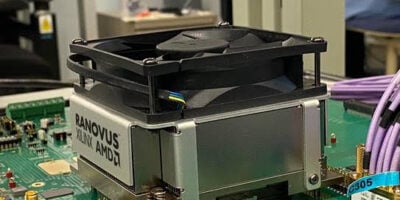

Concept car drives 1000+ km on compact battery
“The Mercedes-Benz Vision EQXX shows how we envision the future of the electric car. In just one and a half years, we have developed the most efficient Mercedes ever – with an energy consumption of less than 10 kWh per 100 kilometres,” explained Mercedes CEO Ola Källenius. “We will build the most desirable electric cars in the world.” The announced energy consumption corresponds to an efficiency of more than 6 miles per kWh.
Part of this efficiency is due to the extensive measures taken to optimise aerodynamics and reduce weight. Software is expected to make at least as large a contribution. Improving long-distance efficiency was one of the developers’ central goals. According to Mercedes CTO Markus Schäfer, experience from racing (Formula 1 and Formula E) also flowed into the development. “This proves that innovations from motorsport – where powertrains are already highly electrified – have direct relevance for the development of road vehicles,” Schäfer explained.
Overall, Daimler wants to have achieved an overall efficiency of the powertrain from the battery to the wheels of 95%. By comparison, in a vehicle with an efficient combustion engine, only about 30% of the energy stored in the fuel reaches the wheels.


From the charging socket to the battery management and to the latest semiconductors – efficiency was the paramount design aspect for the Mercedes Vision EQXX technology carrier.
Know-how from Formula 1 helped Daimler’s battery experts to compress the energy storage of the EQXX to an extremely compact format. The expertise of Mercedes-AMG High-Performance Powertrains (HPP) in Brixworth, UK, played an important role. The electric drive system in the Vision EQXX (output: approx. 150 kW) is a self-contained unit comprising electric motor, gearbox and power electronics with a new generation of silicon carbide semiconductors. The inverter is based on that of the upcoming Mercedes-AMG Project ONE hypercar.
The battery pack of the Vision EQXX stores close to 100 kWh of energy with 50 percent less volume and 30 percent less weight than the battery pack of the EQS (for which Daimler claims the world’s best brand). The energy density reaches the market of 400 watts per litre. The battery operates at a voltage of more than 900 volts.


Numerous design measures helped to shrink the weight and dimensions of the battery to the dimensions of what you are more likely to find in a compact car today.
太阳能电池板提供另外集成到屋顶tional power and are said to increase the range by up to 25 km in appropriate weather conditions. To optimise the weight of the vehicle, the Mercedes engineers also used 3D printing to save superfluous mass by means of bionic lightweight construction concepts.
Mercedes-Benz also wants to break new ground in the interaction between driver and vehicle. The UI/UX features a large, one-piece display that extends across the entire width of the interior. Elements of the user interface support seamless interaction between driver and vehicle, including artificial intelligence (AI) that mimics the way the human brain works, Schäfer says.
Not only the Vision EQXX, a road-legal research vehicle itself contains numerous innovations – the development process as such has also been completely retreaded. The use of AI, digital tools and a software-based approach pushed the time required for development from the usual four to five years to 18 months, Schäfer explained. Daimler now wants to bring this development process into series development.
Video:https://media.mercedes-benz.com/vision_eqxx?video=727a8d9b-0261-4c6f-8b17-c9463516f555
Related articles:
Valeo to supply lidar sensors for self-driving Mercedes
Mercedes hands-free driving available in series production
Tesla is the most innovative e-car manufacturer, study says
Mercedes-Benz joins Stellantis to build European battery giant
Toyota starts BEV race from laggard position
Volkswagen adopts NXP battery management for MEB platform






